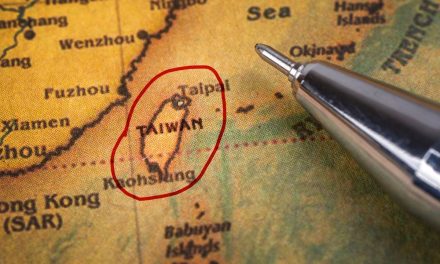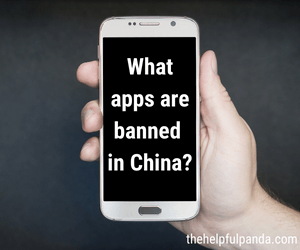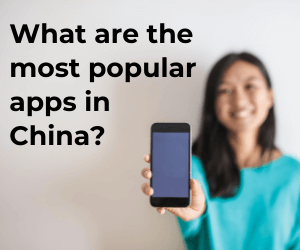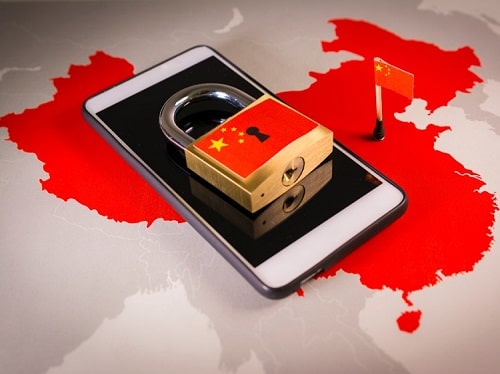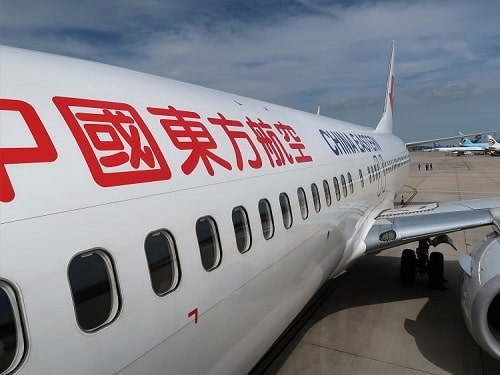Here’s a guide on counting money in Chinese.
Learning about money and how to count is an important part of any foreign language.
This is especially the case if you plan on heading overseas and putting the practice to real use.
In Mandarin Chinese, counting money is relatively straightforward.
However, you first must have an understanding of the Chinese currency and the number rules themselves (luckily there aren’t too many).
Knowing how to count Chinese money will put you in a much better position if you travel to China, or even if you’re just role-playing with Mandarin at home!
Chinese money 101
Let’s start with the Chinese currency.
Renminbi
The Chinese currency is called renminbi (人民币) or RMB for short. In Mandarin, it translates as the people’s currency.
Although RMB is not strictly a currency code, it’s often used like one. For example, ‘RMB 100’ means 100 renminbi. You may also see it written the other way around, i.e. 100 RMB.
The currency symbol is actually ¥, the same as the Japanese yen.
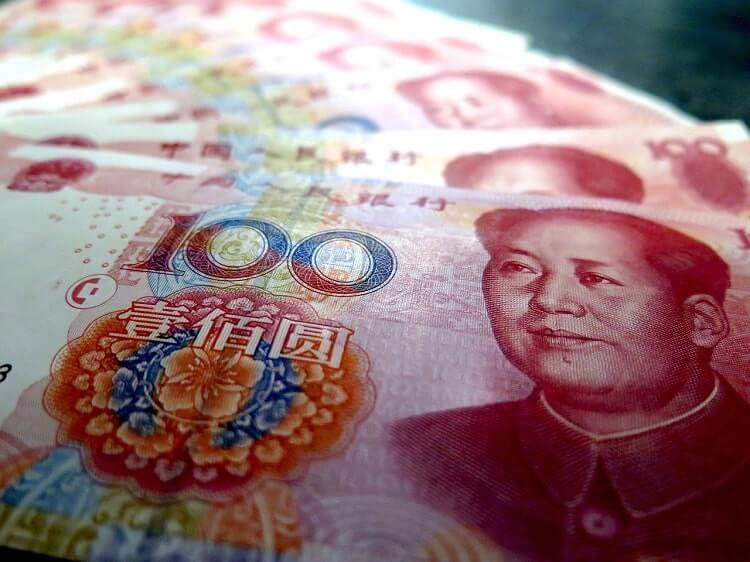
100 yuan notes. Image by Moerschy on Pixabay.
You’ll also see CNY being used – an abbreviation of Chinese yuan – when changing money.
This leads me to the next point.
Yuan
The yuán (元) is the basic unit of the renminbi. It’s the Chinese equivalent of a dollar or a pound.
Things for sale in China, from toothpaste to luxury cars, are expressed in yuán.
Colloquially however, people usually say ‘kuài’ (块) instead of yuán. This is like saying a ‘buck’ in the US or a ‘quid’ in the UK.
One yuán is made up of 10 jiǎo (角) or, in spoken Chinese, 10 máo (毛).
And, one jiǎo is made up of 10 分 (fēn). This is like a penny (i.e. basically worthless!).
The decimal system makes everything relatively easy to count, as outlined further down.
Other jurisdictions
If you’re in Hong Kong, Macau or Taiwan, you’ll need to use the local currency. Renminbi is legal tender in mainland China only.
Chinese numbers
To get a grasp on how money works in China, and to count in Chinese, it’s worth learning the numbers in Mandarin.
Even knowing numbers 1 through 10 will help you in everyday situations.
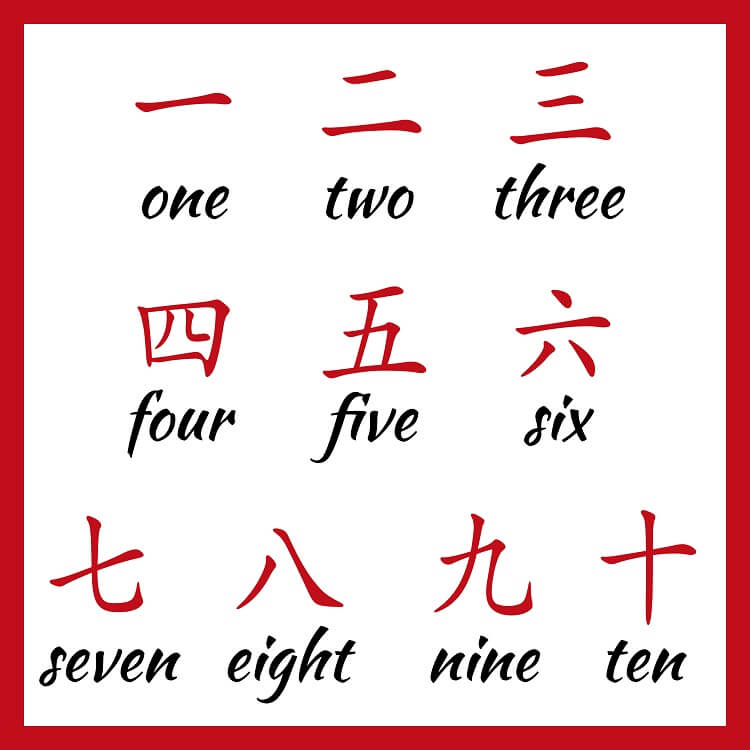
You’ll see these characters everywhere in China. Image by EastFire on Shutterstock.
Beyond 10, Chinese numbers follow a fairly logical sequence.
Although 200 breaks the pattern (note the different character for 2), with a bit of practice you should be able to count up to 1,000 with relative ease.
When you’re traveling around China, it would be rare that you would need to spend more than RMB 1,000 on everyday items, so learning up to this amount is considered a relatively safe level.
So, are you ready to start counting?
| Number | Chinese characters | Pinyin (how you pronounce it) |
|---|---|---|
| 0 | 零 | líng |
| 1 | 一 | yī |
| 2 | 二 | èr |
| 3 | 三 | sān |
| 4 | 四 | sì |
| 5 | 五 | wǔ |
| 6 | 六 | liù |
| 7 | 七 | qī |
| 8 | 八 | bā |
| 9 | 九 | jiǔ |
| 10 | 十 | shí |
| 11 | 十一 | shí yī |
| 12 | 十二 | shí èr |
| 13 | 十三 | shí sān |
| 14 | 十四 | shí sì |
| 15 | 十五 | shí wǔ |
| 16 | 十六 | shí liù |
| 17 | 十七 | shí qī |
| 18 | 十八 | shí bā |
| 19 | 十九 | shí jiǔ |
| 20 | 二十 | èr shí |
| 21 | 二十一 | èr shí yī |
| 30 | 三十 | sān shí |
| 40 | 四十 | sì shí |
| 50 | 五十 | wǔ shí |
| 60 | 六十 | liù shí |
| 70 | 七十 | qī shí |
| 80 | 八十 | bā shí |
| 90 | 九十 | jiǔ shí |
| 100 | 一百 | yī bǎi |
| 101 | 一百零一 | yī bǎi líng yī |
| 110 | 一百一(十) | yī bǎi yī (shí) |
| 111 | 一百一十一 | yī bǎi yī shí yī |
| 120 | 一百二(十) | yī bǎi èr (shí) |
| 121 | 一百二十一 | yī bǎi èr shí yī |
| 200 | 两百 | liǎng bǎi |
| 300 | 三百 | sān bǎi |
| 400 | 四百 | sì bǎi |
| 500 | 五百 | wǔ bǎi |
| 600 | 六百 | liù bǎi |
| 700 | 七百 | qī bǎi |
| 800 | 八百 | bā bǎi |
| 900 | 九百 | jiǔ bǎi |
| 999 | 九百九十九 | jiǔ bǎi jiǔ shí jiǔ |
| 1000 | 一千 | yī qiān |
Don’t worry if you find you’re struggling to learn the numbers. You definitely need a good memory when it comes to Chinese!
There are plenty of language apps, online classes and other resources to help you.
And, of course, there are plenty of great Mandarin schools in China for true language immersion.
How to count Chinese money
For whole numbers, simply follow this structure:
Number + 块 (kuài)
Remember, 块 (kuài) is the common way of saying 元 (yuán).
So, RMB 3 is 三块 (sān kuài).
Easy!
If it’s not a whole number
Just follow this structure:
Number + 块 + Number + 毛 (máo)
Remember, there are 10 毛 (máo) in a 块 (kuài).
So, RMB 3.5 is 三块五毛 (sān kuài wǔ máo).
When you’re buying things in the shops, however, people generally don’t say the last word (毛). It’s implied, so it drops off.
In English, it’s like saying “three dollars fifty” rather than “three dollars fifty cents”.
So, RMB 3.5 is 三块五 (sān kuài wǔ) – the colloquial way.
How do you write ‘money’ in Chinese?
It’s 钱 (qián).
When you’re counting Chinese money, adding 钱 (qián) to the end of the sentence is optional.
So, for a bowl of rice costing RMB 3, you could say:
三块钱 (sān kuài qián) or just 三块 (sān kuài).
Chinese money in a supermarket
In Chinese supermarkets, prices will be more specific. For example, an item might cost RMB 3.56.
This would be said as 三块五毛六 (sān kuài wǔmáo liù).
So, just add 6 on the end.
The full sentence is really 三块五毛六分 (sān kuài wǔmáo liù fēn), but the 分 (fēn) is often dropped off.
Exception to the rule
With all foreign languages, there are exceptions to the rule. Mandarin is no different.
If a number starts with a 2, it’s represented as liǎng (两) rather than èr (二).
So, if an item costs RMB 2.5, it’s 两块五 (liǎng kuài wǔ).
And if the item were RMB 2.52 in a supermarket, it would be said as 两块五二 (liǎng kuài wǔ èr).
Counting with your hands
Chinese people often use their hands when showing you the price for something, especially in markets. This can make communicating easier.
While 1 to 5 may look familiar, 6 through 10 are unique to China as far as I know.

Notice there are three ways of expressing number 10. Image by Achii on Shutterstock.
I especially love number 6, which in some cultures is actually ‘hang loose’ or ‘hang 10’. So, don’t confuse this for number 10 in Chinese!
Sadly though, Chinese people won’t shake their hand like a Californian surfer. When you count with your hands in China, you hold them still.
As you can see in the picture, there are different ways to show the number 10. My personal favorite is the last one, as it’s meant to resemble the character for number 10 (十).
Chinese counting tool – the abacus
In ancient China, before calculators were around, people used an abacus to count money.
Believe it or not though, I have seen a few old grannies in small Chinese towns still use an abacus in their shop. It’s such an awesome sight!
I can’t say I know my way around an abacus, so if you want to learn how to move and count the beads, the above video may help.
Chinese exchange rates
Now, back to the current day.
Not sure how much the Chinese currency (renminbi) is actually worth?
Here’s how much yuan you’ll get for one unit (e.g. $1, £1 etc) in your currency below.
| Region (currency) | Exchange rate |
|---|---|
| USA (USD) | 6.39 |
| UK (GBP) | 8.78 |
| Canada (CAD) | 5.17 |
| Europe (EUR) | 7.43 |
| Australia (AUD) | 4.78 |
| India (INR) | 0.08 |
| Singapore (SGD) | 4.75 |
| Hong Kong (HKD) | 0.82 |
(These are current as at publish date; refer to XE for live rates.)
If you end up finding a job in China, chances are you’ll earn a generous local salary, even if you were to teach English in China.
So, although you’ll live very comfortably in China, the money you make there won’t stretch as far when you return home.
That’s why it’s important to keep exchange rates in mind if you send or bring money home.
Putting the exchange rate into practice – an example
John, an American teacher in China, spends 20 yuan on a bowl of dumplings.
To calculate how much this costs him in US dollars, he divides the figure by 6.39. John’s meal works out to be just over $3. That’s cheap!
Take a look at this page for an idea about the cost of living in China.
Bargaining in China
Now that you know how to count money in Chinese, you can go shopping!
The country is full of bustling markets with clothes, household goods, gifts and Chinese souvenirs you can bring home with you.

Bargaining is common at places like this across China. Image supplied by Mike Cairnduff.
Negotiating the price you pay for these goods is the norm. So, if you enjoy the art of bargaining, you’ll love shopping in China!
How it works
Ask for the cost of the item and give a counter-offer of around half or two-thirds.
The vendor isn’t likely to give it to you for the low price you want. So, you’ll need to go back-and-forth a few times until you arrive at a price you’re comfortable with.
Haggling is part of Chinese culture, so when you’re out shopping it’s important to think and act like a Chinese person.
They would never accept the first price they’re given!
A simple conversation might go like this:
You: 多少钱? (Duōshǎo qián?) How much is it?
Vendor: 一百块钱 (Yībǎi kuài qián) 100 yuan.
You: 太贵了。六十块可以吗? (Tài guile. Liùshí kuài kěyǐ ma?) It’s too expensive. How about 60 yuan?
Vendor: 六十块太低了。八十块, 好吗?(Liùshí kuài tài dī le. Bāshí kuài, hǎo ma?) 60 yuan is too low. Is 80 yuan OK for you?
You: 好的 (Hǎo de). OK.
The lazy way (no counting money in Chinese required!)
Most Chinese shop holders have a calculator (or their phone) handy and will enter the price into the calculator and show you.
Chinese people understand – and use – the numerals you’re used to (as well as having Chinese characters).
As they punch the numbers into their calculator, they might say the numbers in Mandarin as well. But often no words are spoken.
To bargain, all you need to do is punch in a lower price and see if the vendor agrees with the price.
If they don’t, they’ll simply show you another price on the calculator. You both keep doing this until you agree on a price.
Walking away
A good tactic that I often use in China is I just walk away if I’m still not happy with the price after the negotiation.
In most cases, they’ll come calling after you. They don’t want to lose a sale over a few yuan.
High-end stores
You generally can’t bargain at shopping malls and high-end shops. And you can’t bargain at places like supermarkets, convenience stores and the like.
Heading to China soon?
Don’t forget the Chinese internet is censored and you won’t be able to access all your favorite sites (Facebook, Instagram, WhatsApp, Google, etc) using Wi-Fi over there.
You can read my quick review for the best VPN that works in China. It’s a big time-saver.
Good luck counting Chinese money
If you’re lucky enough to visit China, you’ll get plenty of hands-on experience counting money over there.
And, the longer you’re in China, the better you’ll become at getting the best prices in the markets.
So, good luck with counting (and spending) money in China. It’s an amazing and crazy country and you’re going to have a blast!
As always, let me know in the comments if you have any questions.
Next, check out the article I wrote about Chinese culture, of which money is an important part. It’s a comprehensive article, so have your cup of Chinese tea ready!
Main image credit: Travis182 on Shutterstock.
FAQ about Chinese money
What’s Chinese money called?
The most common term is 钱 which is pronounced ‘qián’.
What’s Chinese money worth in America?
One Chinese yuan is worth about 15 cents in the US. So, no matter how much Chinese yuan you have, simply divide the amount by about six.
Why do Chinese save money?
Historically, Chinese have had to save money to get through many hardships, famines, wars, etc. This ethos has continued on to this day.
Whose picture is on Chinese currency?
It’s Mao Zedong, the founding father of modern day China.



